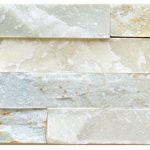Introduction:
Cultured stone panels have become an increasingly popular choice for interior and exterior design projects due to their versatility, durability, and aesthetic appeal. These innovative building materials offer a cost-effective alternative to natural stone while providing the same timeless elegance and charm. In this article, we will explore the many benefits and uses of cultured stone panels, as well as provide insight into their installation and maintenance.
Chapter 1: What are Cultured Stone Panels?
Cultured stone panels, also known as manufactured stone veneer, are artificial stone products that mimic the look and feel of natural stone. They are made by casting concrete, aggregate materials, and pigments into molds to create realistic textures and colors that closely resemble natural stone. Cultured stone panels are lightweight and easy to install, making them a popular choice for both interior and exterior applications.

Chapter 2: Benefits of Cultured Stone Panels
1. Cost-Effective: Cultured stone panels are generally more affordable than natural stone, making them a budget-friendly option for homeowners and builders.
2. Lightweight: The lightweight nature of cultured stone panels makes them easy to handle and install, reducing labor and transportation costs.
3. Versatility: Cultured stone panels come in a variety of styles, colors, and textures, allowing for endless design possibilities.
4. Durability: Cultured stone panels are resistant to weathering, fading, and chipping, ensuring long-lasting beauty and performance.
5. Easy Maintenance: Cultured stone panels require minimal maintenance and can be cleaned with soap and water, making them a practical choice for busy homeowners.
Chapter 3: Uses of Cultured Stone Panels
1. Exterior Applications: Cultured stone panels are commonly used to enhance the exterior of homes, buildings, and landscaping features such as fireplaces, chimneys, and outdoor kitchens.
2. Interior Applications: Cultured stone panels can be used to create accent walls, fireplace surrounds, kitchen backsplashes, and other decorative elements to add a touch of elegance to any interior space.
3. Commercial Applications: Cultured stone panels are also popular in commercial settings such as hotels, restaurants, and retail stores, where they can be used to create a warm and inviting ambiance.
Chapter 4: Installation of Cultured Stone Panels
Installing cultured stone panels is a straightforward process that can be done by experienced DIYers or professional contractors. The following steps outline the typical installation process:
1. Surface Preparation: Ensure the surface is clean, dry, and free of dust and debris before installing the cultured stone panels.
2. Apply Adhesive: Use a high-quality construction adhesive to adhere the cultured stone panels to the surface, following the manufacturer's recommendations.
3. Placement: Carefully place the cultured stone panels on the surface, starting from the bottom and working your way up, ensuring a tight fit and proper alignment.
4. Grouting: Fill in the gaps between the cultured stone panels with grout or mortar to create a seamless finish.
5. Sealing: Apply a sealant to the cultured stone panels to protect them from moisture and staining, ensuring long-term durability.
Chapter 5: Maintenance of Cultured Stone Panels
Cultured stone panels are relatively low maintenance, but proper care is essential to ensure their longevity and appearance. Here are some maintenance tips for cultured stone panels:
1. Regular Cleaning: Dust and debris can accumulate on cultured stone panels over time, so it's important to clean them regularly with a mild detergent and water.
2. Avoid https://www.fs-slate.com/stepstone-pavers-the-ultimate-guide-to-outdoor-elegance/ : Avoid using harsh chemicals or abrasive cleaners on cultured stone panels, as they can damage the surface and affect the color and texture.
3. Inspect for Damage: Periodically inspect the cultured stone panels for any signs of damage, such as cracks or chips, and repair them promptly to prevent further issues.
4. Sealing: Reapply a sealant to the cultured stone panels as needed to protect them from moisture and UV exposure, especially in outdoor applications.
Chapter 6: Design Ideas with Cultured Stone Panels
1. Rustic Charm: Create a cozy and inviting atmosphere by using cultured stone panels to accentuate a fireplace or feature wall in a rustic-style living room.
2. Modern Elegance: Incorporate sleek and contemporary cultured stone panels into a kitchen backsplash or bathroom wall to add a touch of sophistication to the space.
3. Outdoor Oasis: Transform an outdoor patio or garden area with cultured stone panels to create a stunning focal point, such as a waterfall or seating area.
Conclusion:
Cultured stone panels offer a versatile and cost-effective solution for enhancing the beauty and functionality of any space, whether indoors or outdoors. With their durability, easy maintenance, and endless design possibilities, cultured stone panels have become a popular choice among homeowners, builders, and designers alike. By understanding the benefits, uses, installation, maintenance, and design ideas associated with cultured stone panels, you can make informed decisions when incorporating these innovative building materials into your next project.
